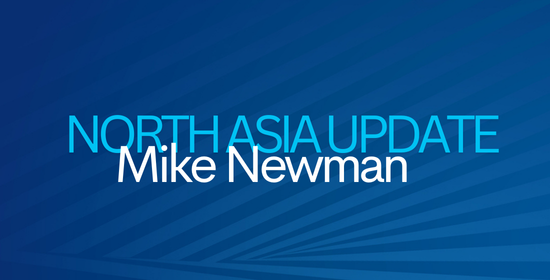North Asia – A New PM in Japan, Energy & Housing
Japan will have a new prime minister soon after incumbent PM Fumio Kishida said he would not stand for reelection. In short, changes in prime minister rarely signal radical position changes on policy as the smoky back rooms decide that. It is not something to lose sleep over.
This month, we take a closer look at Japan in the energy space after the last few months focusing on Korea. Remember that the Japanese government intends to deploy A$150 billion over the next 15 years on clean energy transition support.
Notwithstanding the upcoming JETRO trip to Newcastle on September 9th, Australia is being deprioritized by the Ministry of Economy, Trade & Industry (METI) as a Tier 1 hydrogen/ammonia supplier. While the specifics have not been explicitly stated, my discussions with government agencies in Japan view the inconsistency around renewables deployment and energy policy fog as key factors. Our treatment of gas and coal have started to cause them to question our suitability as a long-term partner of energy. They do not view us as a clean energy superpower.
It is also important to add that both Korean and Japanese stakeholders are growing increasingly concerned with ‘first nations’ related approvals. It is not that they have any intention to be non-compliant, rather the addition of a more bureaucratic red tape just make Australia a less attractive investment destination versus other jurisdictions. Note that North America and the Gulf states are where priority is being focused.
A good example of why North Asian investors are becoming frustrated is the recent NSW DCCEEW Strategy Plan. There is nothing remotely commercial about this document. It is skewed toward DEI-driven virtue signaling which does little to assuage fears of the North Asian investment community. The irony of ‘Point 20’ out of twenty is “identifying barriers to private investment” which is essentially the entire document. It is an concerning to say the least. What the government doesn’t realize is that the North Asian investors heavily trawl these government websites for information and take what is written as gospel. It is problematic.
Switching back to Japan, the upcoming Hunter delegation is still important as they want to reconsider this position because of the bilateral, especially the links to national security and defence cooperation via the QUAD. We can get back to Tier 1 status but government will need to send much stronger signals. So, who is visiting our shores?
Japanese Delegation to the Hunter
JETRO will be leading a 50-person delegation to the Hunter on September 9th. This will be interesting because it will include visitors from Japan HQs from the following companies:
EBARA Corporation – Pump manufacturer (Singapore’s Mer Lion uses Ebara)
JFE Steel Australia Resources Pty Ltd – Steel & Raw Materials procurement
Norinchukin Australia Pty Limited – Japan’s largest agricultural bank
Azbil Corporation – Japanese version of Johnson Controls
Chiyoda Corporation – EPC contractor
Mitsubishi Corporation – Major trading house
Sumitomo Mitsui Banking Corporation – Top 3 Japanese megabank
Toyota Motor Corporation Australia Ltd – needs no introduction
Mitsubishi UBE Cement Corporation – Japan’s largest cement manufacturer
JFE Shoji Australia Pty. Ltd. – Trading house for steel company
FUKUI SEISAKUSHO CO., LTD. – Safety valve manufacturer for industrial applications
Mitsubishi Heavy Industries Australia – leading hydrogen technology
Niterra Australia Pty Ltd – Auto/Semiconductor parts
Hitachi, Ltd.- Global industrials
Hitachi Australia – smart cities, trains, healthcare
Yokogawa Australia Pty. Ltd.- major plant system control systems, water purification
Sumitomo Corporation – Major trading house
SAKIGAKE-Semiconductor Co.,Ltd. – Semiconductor manufacturing
Sugawara Sangyo Industries, Ltd.- Water/port related infrastructure – gates, cranes etc
Mitsui O.S.K Lines – Major shipping line
NNA Australia – Media company
ITOCHU Australia Ltd – Major trading house (linked with MCi Carbon)
Toshiba Energy Systems and Solutions Corporation – Power infrastructure
Toho Gas Australia – Large gas company
Toray Industries, Inc.- Major textiles maker. Makes all carbon fibre for Boeing 787
Osaka Gas Australia Pty Ltd – Second largest gas company
JOGMEC – Japan’s energy security agency
Japanese Consulate-General in Sydney
To be clear, the Japanese see the Hunter as the best location to execute the clean energy transition in Australia. Yet, there remain concerns that our renewable energy deployment is too slow, uncompetitive and poorly designed.
Take the CWO REZ. Meeting with one of the North Asian transformer businesses, the operator of the CWO REZ is asking for 30% discounts on their products despite a global shortage of supply. European and Chinese transformer makers have also walked away, meaning that the CWO REZ economics aren’t attractive (forcing discounts on the network side) which will cause delays to the deployment until they commit to buying a full price transformer off the shelf and find a production slot.
Housing
Japan already has a strong presence in housing and a commanding advantage in Australia – Asahi Kasei, Daiwa House, Sekisui & UR. These companies are keen to work with the NSW Government to provide large scale housing solutions to address the chronic shortage of houses. The is a rising possibility they form a consortium to present a united front on housing. Modularization is a key tenet of their business models.







